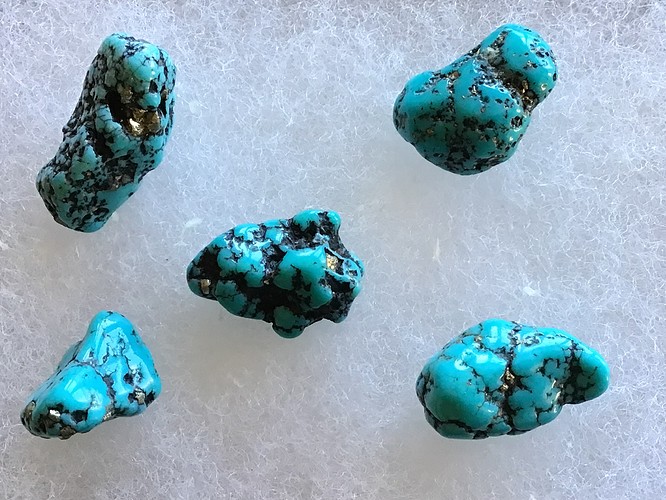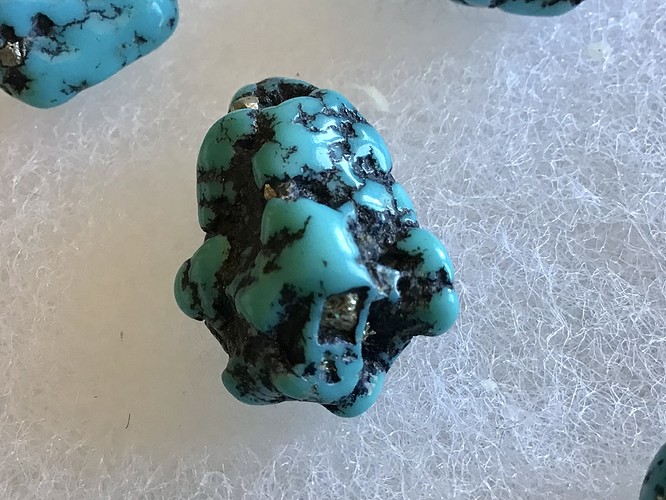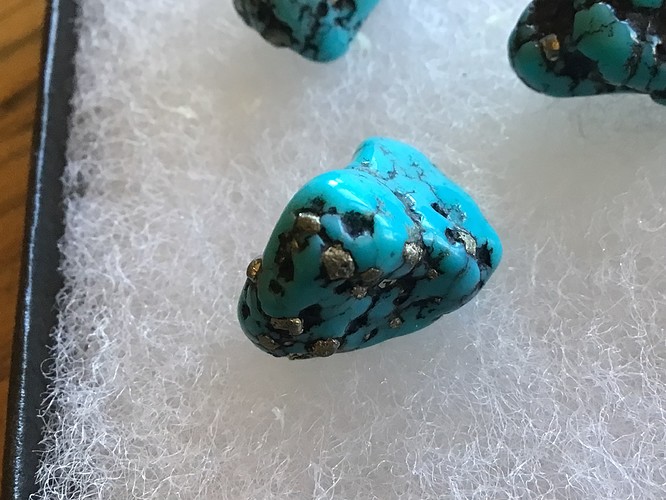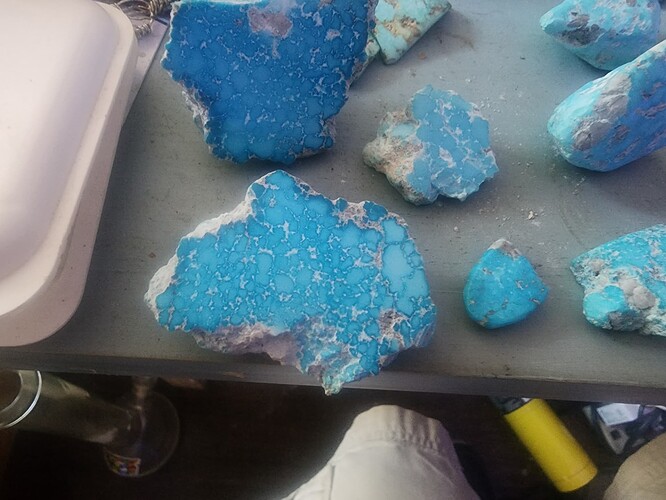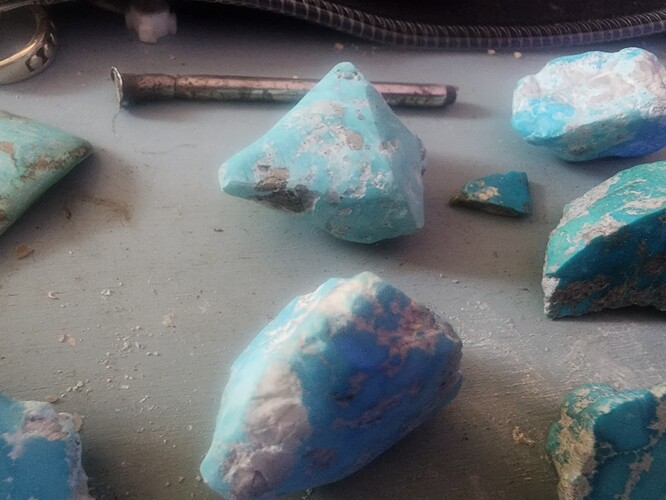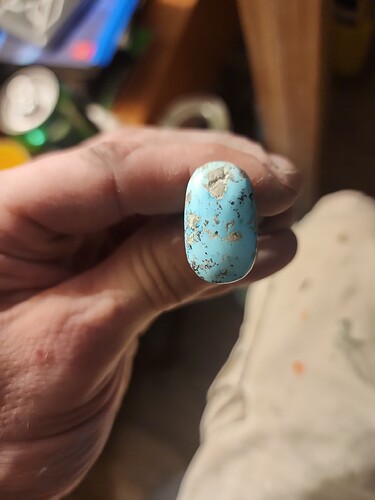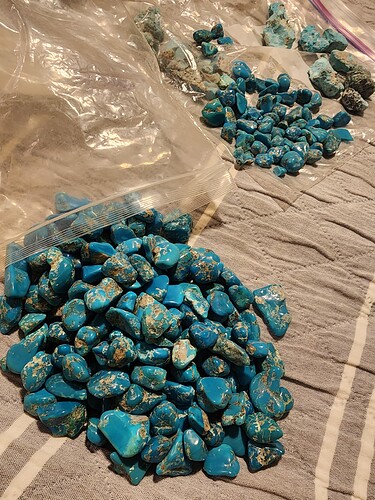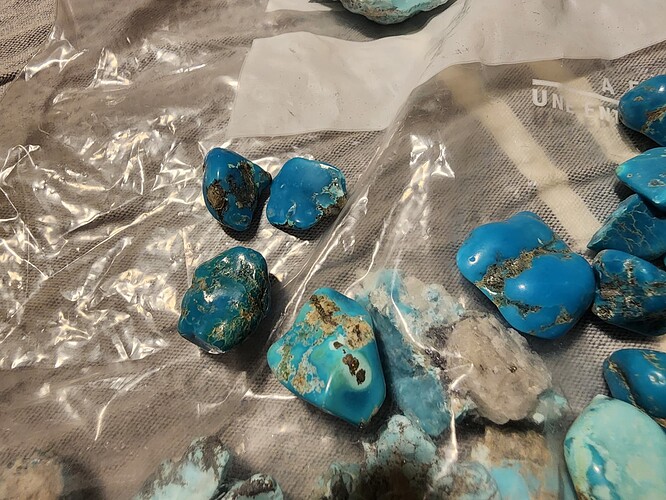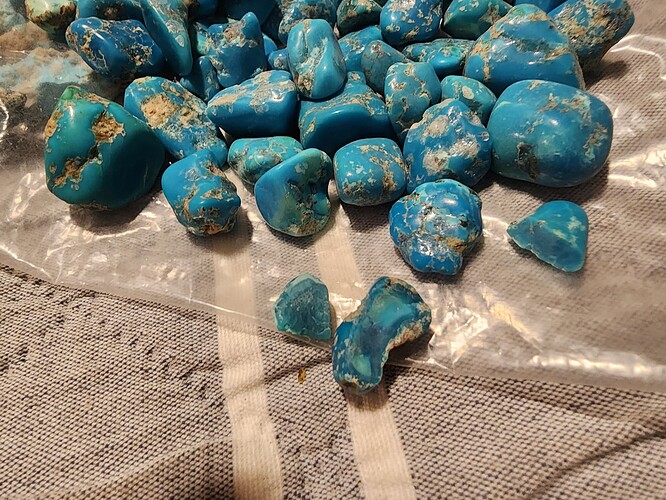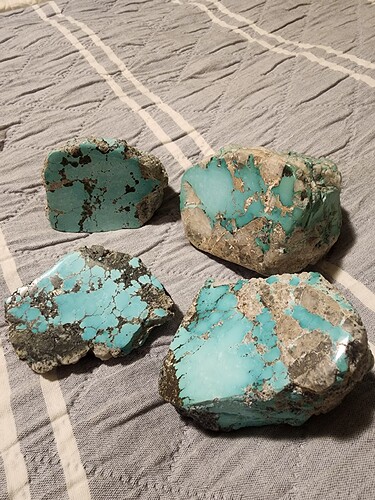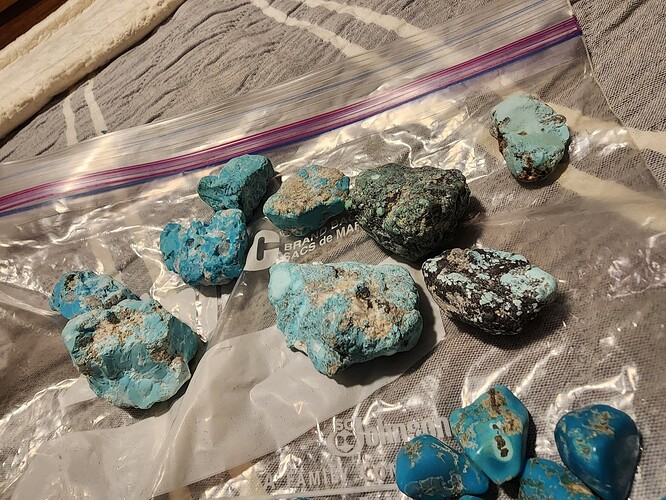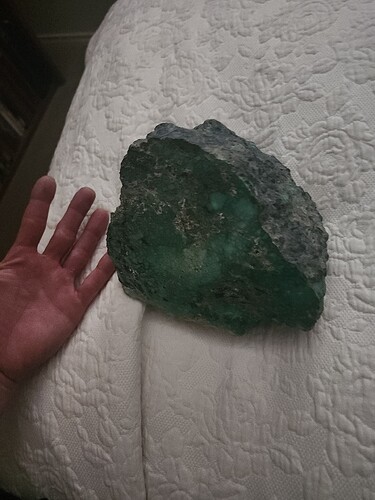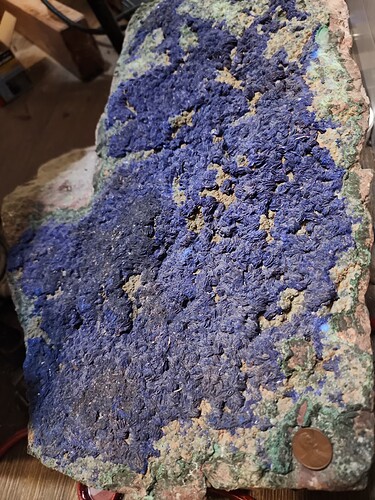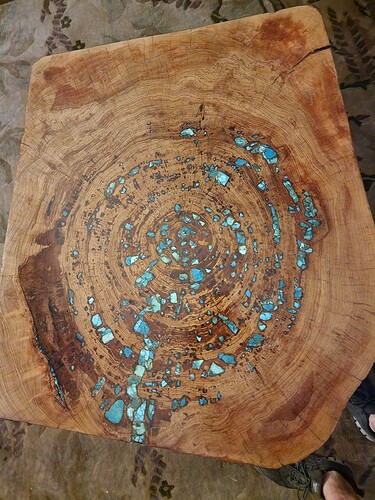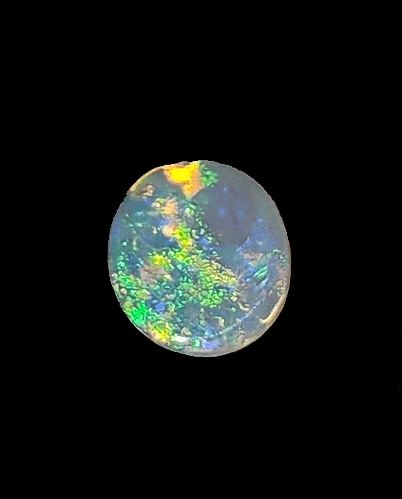With the numerous discussions of pyrite in Morenci and Kingman (including Ithica Park), I thought it might be of interest to post these Kingman nuggets. Years ago I bought these from a gem and mineral show. The seller claimed he had purchased these from a collector who had had these for 50+ years. He had several dozen of these, I bought 5, my friend also bought several!
As I had only seen pyrite as inclusions in polished cabs, I found theses interesting. Like most Kingman, there are likely stabilized… I’m temped to cut one in half to see the interior.
If anyone else has nuggets with pyrite crystals, I’d love to see them.
That stuff definitely looks stabilized. This is some turquoise from the early 80s somewhere around battle mountain nv. Not sure which mine that means its from as from what ive read, there was three producing mines at that time. Or if anyone knows a Mrs/Ms Grace Williams, she gave it to my grandfather in 1982.
Welcome to the forum. On the contrary, the nuggets posted by @Bmpdvm have absolutely no indication at all of having been stabilized.
Why don’t you introduce yourself, tell us a bit about your location, background, and the source of your expertise?
Heres some kingman stabilized nuggets vs non stabilized gem quality specs (should be a pic of some broken apart stabilized for you to see the interior and some that has been polished). If the op ever broke them open like they said they were interested in doing then they’d know for sure. You generally arent going to see something polished with divets or areas where it’s concave as those would be worn down during polishing. The parts with iron pyrite formed would also be worn down if those were polished but that’s not the case. Those specimens have that waxy sheen to them which turquoise doesnt naturally come with. All those factors are what leads me to believe those are indeed stabilized. I’m not claiming to be an expert, I’ve just looked at a piece or two as i possess maybe 20-30 lbs or so.
Sorry forgot the second part of your question. Name’s Garrett; I’m in Austin, Tx. Im just something like a rockhound that’s been collecting for 25-30 years. My family used to frequent the indian market as my parents have a nice collection of bear fetishs. Here’s a couple pics from my collection:
. Largest piece of turquoise i have, some crystalized azurite, some turquoise inlay i did, and a little piece of crystal opal I cut.
Again, welcome Garrett. Looks like you have some beautiful material in your shop!
I’m a designer, silver and goldsmith, and studio jeweler. Apprenticed in stone cutting and inlay with master cutter and inlayer Jana Mitchell in Gallup NM the early 70’s, ran a cutting and inlay shop as a designer/production manager for my trading company employers in the 70s, and ran my own commercial cutting shop as a manufacturer of higher end Native American handmade jewelry in the 80’s.
The nuggets @Bmpdvm has posted are natural Kingman with Pyrite inclusions. Back in the day these were tumbled to a near high polish, rinsed off, drilled with an ultrasonic drill, cleaned in an ultrasonic bath, dipped in black liquid shoe polish, dried and then hand finished on a polishing lathe with green Zam polishing compound, and sometimes (additionally) with black or red rouge. Occasionally, yellow bobbing compound is also used before the Zam step of the process.
If you aren’t yet familiar with it, Zam is used commercially in finishing both cut stones like Turquoise, and for silver since it has excellent very fine abrasive characteristics, in addition to the excellent polish it imparts.
Both Zam and yellow bobbing compound tend to leave a lustrous waxy sheen on stones polished with these compounds, and owing to the porous nature of natural stones may marginally deepen color right at the surface.
Yellow bobbing compound (and lots of it) was what Robert Leekya used to achieve the beautiful, sensuous rounded curves on his signature carved turquoise cabochons.
If you take a close look at the Pyrite inclusions on @Bmpdvm‘s Kingman nuggets, aside from the black shoe polish coating in the recesses, there’s a complete absence of any filler material which would normally be present with resin permeated stabilized, or treated stone. I see a bit of Quartz here and there, but also with no resin surrounding it.
I love that wood with turquoise. Is that a table? @mmrogers …is black shoe polish only used to make the matrix stand out? Thanks.
Hi @nanc9354. Yes. The natural stone is dense enough that it doesn’t really penetrate the stone. Natural Kingman nugget tumbles out whitish in the recessed areas, so it was typically bathed in liquid black shoe polish which was then polished off the raised areas leaving a coating of black in the recessed areas. This technique was/is also used on some of the nuggety Kingman cabs. Supply houses used to have trays full of the stuff, and you often see it in jewelry from the 70s and 80s.
Great information about my nuggets and how these were processed in the past @mmrogers. I appreciate your knowledge and am happy to know you are not seeing any sign of resin. I think we’ve all seen the old shoe polish nuggets, and pyrite in cabs, but I had not seen nuggets with the pyrite cubic crystals protruding. I initially thought I’d have a pendant or something else made with a couple of these…now I just appreciate them as interesting and good examples of older Kingman. (I’d still like to cut one in half to see the interior😬)
I have a ring I bought pawn (Kingman turquoise, still have the ticket) that is a perfect example of this. When I first got it, it had more black in the crevices; now the black has worn off somewhat, and you can see the white matrix. It was a natural stone of lower quality that has really darkened with age. It is a nuggety-ish type stone.
